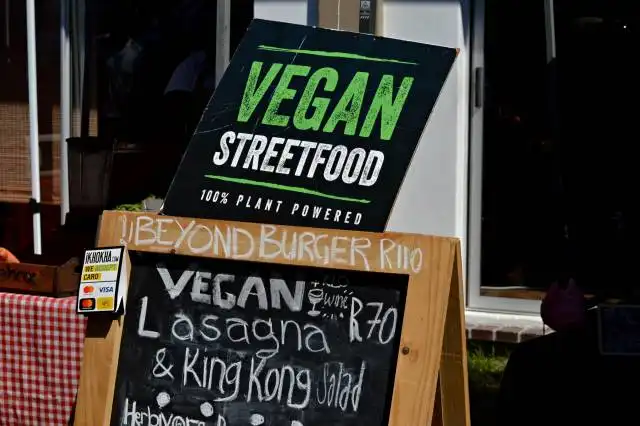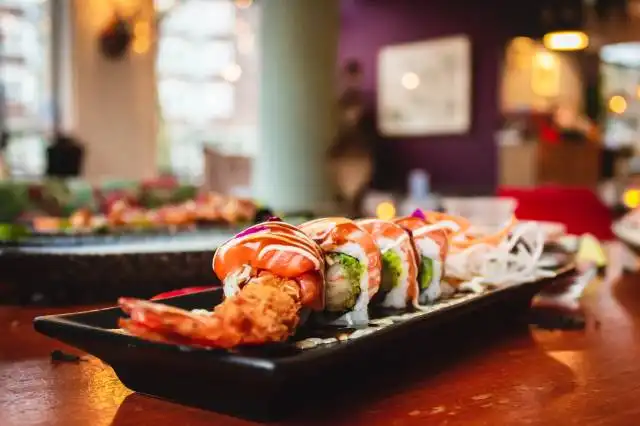Start a Taqueria Business
Dishing Out Diversity: The Allure of Starting Your Own Taqueria
| Updated


TAQUERIA BUSINESS
Tempted to take a fresh bite out of the food industry? Consider launching a Taqueria business, where you'll charm your customers' taste buds with authentic Mexican tacos. Bursting with flavors and cultural enrichment in each yummy bite, a Taqueria business serves up a variety of tasty tacos, typically stuffed with seasoned meat, veggies, and other fillings. Not just a food joint, but your outlet could be the go-to spot for taco lovers, a corner of Mexico delivering joy, one taco at a time.
Jump to Business Plan
RELATED BUSINESS IDEAS
Browse ALL Food & Beverage Entrepreneurship Business Ideas
Discover Your Perfect Domain
Unlock the door to your online success with our hand-picked selection of premium domain names. Whether you're starting a new venture or rebranding an existing one, the right domain can set the tone for your digital presence. Browse through our curated list, each with its unique potential to enhance your brand's visibility and credibility.
TAQUERIA MINI BUSINESS PLAN
This a quick reality check to help you identify the strengths and weaknesses of your business concept before you dive in.
Expected Percent Margin:
- Gross Margin: 70-75%
- Net Profit Margin: 10-15%
Earnings Expectations:
- Daily Earnings: $300 - $800
- Weekly Earnings: $2,100 - $5,600
- Monthly Earnings: $8,100 - $22,400
- Annual Earnings: $97,200 - $268,800
Actions to Hit Those Numbers:
Food Cost and Inventory Management:
- Initial Investment: $10,000-$20,000 for kitchen equipment and initial food supply.
- Supplier Relationships: Connect with local suppliers for fresh, cost-effective products.
Marketing and Customer Acquisition:
- Social Media: Engage customers with mouth-watering photos and Amusing stories 4-5 times a week.
- Local Advertisements: Allocate $200 - $500 a month for flyers, local ads, or community billboard spaces.
Sales and Customer Experience:
- Staffing: Ideally, employ 2-3 full-time and 2-3 part-time staff to handle busy periods.
- Menu: Keep a simple, streamlined menu to manage costs, and increase efficiency.
Cost Control:
- Rent: Choose a location where the rent is less than 10% of expected monthly sales.
- Utilities and Maintenance: Budget around $400-$700 per month.
Business Operations:
- Open Hours: Operate at least 12 hours a day, 6-7 days per week to maximize potential sales.
- Transaction Volume: Aim for 50-100 transactions per day—the average taqueria meal price should be between $8-$15.
Remember, individual results can vary significantly based on location, business model, food prices, and other factors. Always conduct your own feasibility study or consult with a financial advisor.
NOT WHAT YOU HAD IN MIND? Here are more ideas



Browse ALL Food & Beverage Entrepreneurship Business Ideas
Grab Your Business Website Name
Before you get caught up in the whirlwind of setting up your business, invest in a domain name. It's a small but significant step that lays the foundation for your brand and makes it easier for customers to find and trust you. Just like you wouldn't build a house without securing the land first, don't build a business without securing your domain name.
"Why? Can't that wait?" Here's why it shouldn't
Step 1: Determining if a Taqueria Business is Right for You
Startup Expenses
Starting a taqueria business requires a significant investment of money and resources. Before committing to the endeavor, you should take the time to research and calculate the startup expenses. These expenses can include the cost of the building, equipment, supplies, licenses, and permits. You should also consider the cost of hiring employees, marketing, and any other costs associated with getting the business up and running.
Ongoing Expenses
Once the business is up and running, there will be ongoing expenses that must be taken into account. These expenses can include rent, utilities, payroll, taxes, insurance, and other operational costs. Additionally, you should consider the cost of food, supplies, and any other items that will need to be purchased regularly.
Examples of Ways to Make Money
To make money with a taqueria business, you will need to offer a variety of menu items that customers will be willing to pay for. You can also offer catering services, delivery services, and special events. Additionally, you can offer discounts and promotions to attract more customers. Finally, you can also look into partnering with other businesses in the area to increase your customer base.
Step 2: Naming the Business
When it comes to naming a taqueria business, it is important to come up with something that is catchy, memorable, and unique. It should also reflect the type of food that will be served. Consider using words that are associated with Mexican cuisine, such as “taco”, “burrito”, “quesadilla”, “tamale”, etc. Additionally, consider using words that evoke a sense of fun and excitement, such as “fiesta”, “salsa”, “party”, etc. It is also important to make sure the name is not already taken by another business. Research the local area to make sure the name is not already in use.
When it comes to the actual process of creating a name, brainstorming is key. Make a list of potential names and then narrow it down to the best one. Consider the opinions of friends and family, as they may be able to provide valuable insight. Additionally, consider using an online name generator for inspiration. Once the name has been chosen, it is important to make sure the domain name is available. This will ensure that the business can have a website and an email address that matches the name.
Finally, it is important to make sure the name is trademarked. This will ensure that the business name is legally protected and that no other business can use it. It is also important to make sure the name is not offensive or inappropriate in any way. Once the name has been chosen and trademarked, the business is ready to move forward with the next steps.
Step 3: Developing a Business Plan
Writing a business plan is an important step in starting a taqueria business. It is important to include a detailed description of the business, including the type of food to be served, the target market, the location, and the expected profits. The business plan should also include a detailed budget, including startup costs, ongoing expenses, and projected income. Additionally, the business plan should include a marketing plan to help attract customers and increase sales. It is also important to include a risk assessment and a plan for how to handle any potential risks. Finally, the business plan should include a timeline for when the business will be up and running.
Securing Funding
Securing funding is an important step in starting a taqueria business. It is important to research the various funding options available, such as traditional bank loans, small business grants, and crowdfunding. Additionally, it is important to consider other sources of funding, such as family and friends, angel investors, and venture capitalists. It is also important to consider the terms of the loan, such as the interest rate and repayment schedule. Finally, it is important to create a detailed budget and financial projections to show potential investors that the business is a viable investment.
Step 4: Finding the Right Location
When it comes to finding the right location for a taqueria business, there are several factors to consider. First, the location should be in an area with a high concentration of potential customers. It should also be easily accessible and have plenty of parking. Additionally, the location should have enough space to accommodate the necessary equipment and seating for customers. It should also be in an area that is zoned for a restaurant. Finally, the rent should be affordable and the landlord should be willing to negotiate a long-term lease.
Researching the Local Market
Once you have identified a potential location, it is important to research the local market to determine the demand for taqueria-style food. This can be done by looking at the competition in the area and researching the local demographics. Additionally, it is important to look at the local food trends and determine what type of food customers are looking for. This research can help you determine the type of food you should offer and the pricing structure you should use.
Negotiating the Lease
Once you have identified the right location, it is important to negotiate the lease. This should include a detailed breakdown of the rental costs, the length of the lease, and any additional fees. It is also important to negotiate any additional services that may be included in the lease, such as maintenance and repairs. Additionally, it is important to negotiate any restrictions that may be included in the lease, such as noise levels, hours of operation, and signage.
Securing the Necessary Permits
Once the lease is signed, it is important to secure the necessary permits. This includes obtaining a business license, a health permit, and any other permits that may be required by the local government. Additionally, it is important to obtain any necessary permits for the equipment that will be used in the taqueria. This includes permits for the ovens, fryers, and other equipment. Finally, it is important to obtain any necessary permits for the signage that will be used to advertise the business.
Step 5: Obtaining Licenses and Permits
Before opening a taqueria business, it is important to understand the local, state, and federal requirements for operating a business. Depending on the location, the business may need to obtain a business license, food service license, health permit, and other permits. Additionally, the business may need to register with the IRS and obtain a tax identification number. It is important to research the local, state, and federal requirements to ensure that the business is in compliance with all regulations.
Insurance
It is also important to obtain the necessary insurance to protect the business. This may include general liability insurance, property insurance, and workers’ compensation insurance. Additionally, the business may need to obtain insurance for any vehicles used for the business. It is important to research the different types of insurance and obtain the necessary coverage to protect the business from potential losses.
Financing
In order to open a taqueria business, it is important to secure financing. This may include a loan from a bank, a line of credit, or an investment from a venture capitalist. Additionally, the business may be able to obtain financing from the Small Business Administration. It is important to research the different financing options and determine which one is best for the business.
Step 6: Setting Up the Business
Equipment and Supplies
When setting up a taqueria business, it is important to have the right equipment and supplies. This includes essential items such as a grill, oven, refrigerator, and countertops. It is also important to have the necessary utensils and supplies, such as knives, cutting boards, and containers. Additionally, you will need to purchase ingredients such as tortillas, cheese, and meat. You may also need to purchase other items such as napkins, cups, and straws.
Hiring Employees
Once you have the necessary equipment and supplies, you will need to hire employees. You will need to consider the number of employees you need, their job roles, and the wages you will pay them. You will also need to consider the type of training you will provide and the qualifications you are looking for in potential employees. Additionally, you will need to consider the legal aspects of hiring employees, such as obtaining the necessary permits and paying taxes. It is important to research the local labor laws to ensure that you are compliant with all regulations.
Step 7: Advertising and Marketing
Advertising and marketing are essential for any business, especially a taqueria business. There are a variety of strategies to promote the business, including traditional methods such as print ads, radio, and television, as well as digital methods such as social media, email marketing, and search engine optimization. Additionally, word of mouth is a powerful tool, so it’s important to get the word out to friends, family, and other contacts.
Develop a Budget
When it comes to advertising and marketing, it’s important to develop a budget and stick to it. This budget should include the cost of materials, such as print ads, radio and television spots, and digital marketing campaigns. It should also include the cost of labor, such as hiring a marketing agency or a freelancer to help with the promotion of the business.
Track Results
Once the advertising and marketing campaigns are in place, it’s important to track the results. This can be done by tracking website visits, social media engagement, and other metrics. This data can then be used to optimize the campaigns and ensure that the budget is being used efficiently.
Consider Partnerships
Partnerships are another great way to promote the business. Consider partnering with local businesses, such as restaurants, bars, and other taquerias, to promote the business. Additionally, consider partnering with influencers or bloggers who can help spread the word about the business.
Step 8: Opening Day
Opening day is an exciting time for any business, and a taqueria is no exception. Before the big day arrives, there are a few things that need to be done to ensure that everything runs smoothly. First, make sure that all of the necessary permits and licenses have been obtained. This includes any food-handling permits, health inspections, and business licenses. Next, make sure that all of the equipment is in working order and that all of the ingredients are fresh. Finally, make sure that the staff is properly trained and that they understand the menu and how to prepare the food.
Promoting the Business
Once the taqueria is ready to open, it’s time to start promoting the business. This can be done through traditional methods such as print and radio ads, as well as through digital methods such as social media and email marketing. Make sure to include information about the menu, the hours of operation, and any special offers or discounts. Additionally, consider offering discounts to local businesses or organizations to help build relationships in the community.
Opening Day
On opening day, make sure to have plenty of staff on hand to help with any last-minute tasks. Additionally, have a plan in place for how to handle any unexpected issues that may arise. Finally, make sure to take the time to thank customers for their support and to welcome them to the taqueria. This will help to create a positive first impression and will help to ensure that customers will return in the future.
Step 9: Staying in Business
When starting a taqueria business, it is important to consider strategies for long-term success. This includes developing a customer loyalty program, offering discounts to returning customers, and creating a unique menu. Additionally, it is important to ensure that the business is up-to-date on all health and safety regulations, as well as any local or state laws that may apply. Additionally, it is important to stay in touch with the local community, as this can help to build a customer base and ensure that the business is well-known in the area. Finally, it is important to stay on top of trends in the industry, as this can help to ensure that the business is able to remain competitive and profitable.
EXPLORE MORE CATEGORIES
Browse ALL Business Idea Categories
TAKE THE NEXT STEPS










